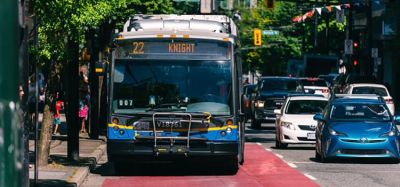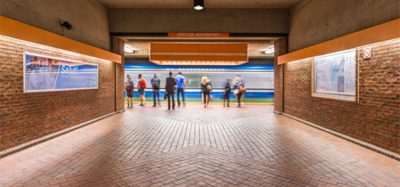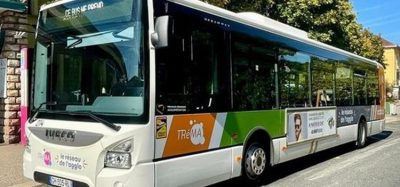Large investments in public transport in the Copenhagen area
- Like
- Digg
- Del
- Tumblr
- VKontakte
- Buffer
- Love This
- Odnoklassniki
- Meneame
- Blogger
- Amazon
- Yahoo Mail
- Gmail
- AOL
- Newsvine
- HackerNews
- Evernote
- MySpace
- Mail.ru
- Viadeo
- Line
- Comments
- Yummly
- SMS
- Viber
- Telegram
- Subscribe
- Skype
- Facebook Messenger
- Kakao
- LiveJournal
- Yammer
- Edgar
- Fintel
- Mix
- Instapaper
- Copy Link
Posted: 25 June 2012 | Henrik Dam Kristensen, Minister for Transport, Denmark | No comments yet
If you have recently visited Copenhagen, you will have noticed it has a large number of on-going construction sites. Significant investments made in various public transport projects over the last couple of years has meant that many roads have been closed and there have been temporary changes in public transport timetables and schedules. The new investments will mean that in a few years’ time, the city will have a new metro line, a new railway (60kmlong), a light-rail connecting the suburbs west of Copenhagen, and new signals on the railway network.
Additionally, the busiest train station in Denmark will be renovated into a modern and attractive facility. Unfortunately, the large number of construction sites will make Copenhagen a less inviting city for the time being, but I am confident that the massive investments will ensure that public transport in Copenhagen will be able to maintain a very high standard in many years to come.
In January 2009, the Danish Parliament decided that the number of passengers using public transportation must be more than the number of motorists. Therefore, the Parliament decided to invest almost €8 million in the Danish public transportation system. The investments have an unprecedented level in Denmark.
If you have recently visited Copenhagen, you will have noticed it has a large number of on-going construction sites. Significant investments made in various public transport projects over the last couple of years has meant that many roads have been closed and there have been temporary changes in public transport timetables and schedules. The new investments will mean that in a few years’ time, the city will have a new metro line, a new railway (60kmlong), a light-rail connecting the suburbs west of Copenhagen, and new signals on the railway network. Additionally, the busiest train station in Denmark will be renovated into a modern and attractive facility. Unfortunately, the large number of construction sites will make Copenhagen a less inviting city for the time being, but I am confident that the massive investments will ensure that public transport in Copenhagen will be able to maintain a very high standard in many years to come. In January 2009, the Danish Parliament decided that the number of passengers using public transportation must be more than the number of motorists. Therefore, the Parliament decided to invest almost €8 million in the Danish public transportation system. The investments have an unprecedented level in Denmark.
If you have recently visited Copenhagen, you will have noticed it has a large number of on-going construction sites. Significant investments made in various public transport projects over the last couple of years has meant that many roads have been closed and there have been temporary changes in public transport timetables and schedules. The new investments will mean that in a few years’ time, the city will have a new metro line, a new railway (60kmlong), a light-rail connecting the suburbs west of Copenhagen, and new signals on the railway network.
Additionally, the busiest train station in Denmark will be renovated into a modern and attractive facility. Unfortunately, the large number of construction sites will make Copenhagen a less inviting city for the time being, but I am confident that the massive investments will ensure that public transport in Copenhagen will be able to maintain a very high standard in many years to come.
In January 2009, the Danish Parliament decided that the number of passengers using public transportation must be more than the number of motorists. Therefore, the Parliament decided to invest almost €8 million in the Danish public transportation system. The investments have an unprecedented level in Denmark.
The current transportation system in the Copenhagen area makes it very easy to travel to and from the city – but since there are no railways, travelling across Copenhagen today is only possible by either bus or car.
One of the busiest roads outside Copenhagen is the Ring 3, where the traffic is very dense. This results in a large number of hours wasted every day; hours that could have been spent at work or with the family. A number of large workplaces are located along Ring 3, including two large hospitals, the technical university and large industrial areas.
So the Parliament, the region and the municipalities around Copenhagen, agreed on building a light-rail network along this road. Light-rail is commonly used in several European cities and has proved to be a popular mode of transportation. The light-rail outside Copenhagen will be 28km-long, and the travel time is expected to be 44 minutes.
The new circular metro line will also make it easier and faster to travel around the city, covering the main hospital in Copenhagen, the central train station, the Parliament and large residential areas. The metro line is expected to open in 2019 and will have 17 new stations. The travel time is expected to be 25 minutes.
Over recent years, the railway to Copenhagen has been overburdened, resulting in many delays and longer travel times, making it less attractive for the many commuters going to work every day in the city. This is why the Parliament has decided to build a new railway leading to Copenhagen which will greatly increase train capacity and reduce travel time.
The buses of Copenhagen play an important role in transporting passengers to and from the train and metro stations. Buses also play an important role in the areas of Copenhagen that have limited access to the railway.
The buses are financed by the municipalities and the regions, but over the last couple of years, the Danish Parliament has subsidised investments in new environmentally-friendly buses, real-time information systems and separate bus lanes. These investments contri – bute to a better image of the entire public transport sector.
One must not forget that cycling is very popular in Denmark. Therefore, the Danish authorities have integrated cycling in transport policies and urban planning. Cycling contributes to a greener city and a healthier population. Recognising the Danish population’s desire to use the bicycle for their daily transport, the Danish Parliament and some municipalities agreed to finance a number of new bike paths with service facilities, such as air pumps.
Although these investments will mean construction sites will remain in Copenhagen for some years to come, I am convinced that all of these investments will contribute to making Copenhagen a greener city.
Related topics
Business Models, Infrastructure & Urban Planning, Multimodality
Issue
Issue 3 2012
Related cities
Denmark








